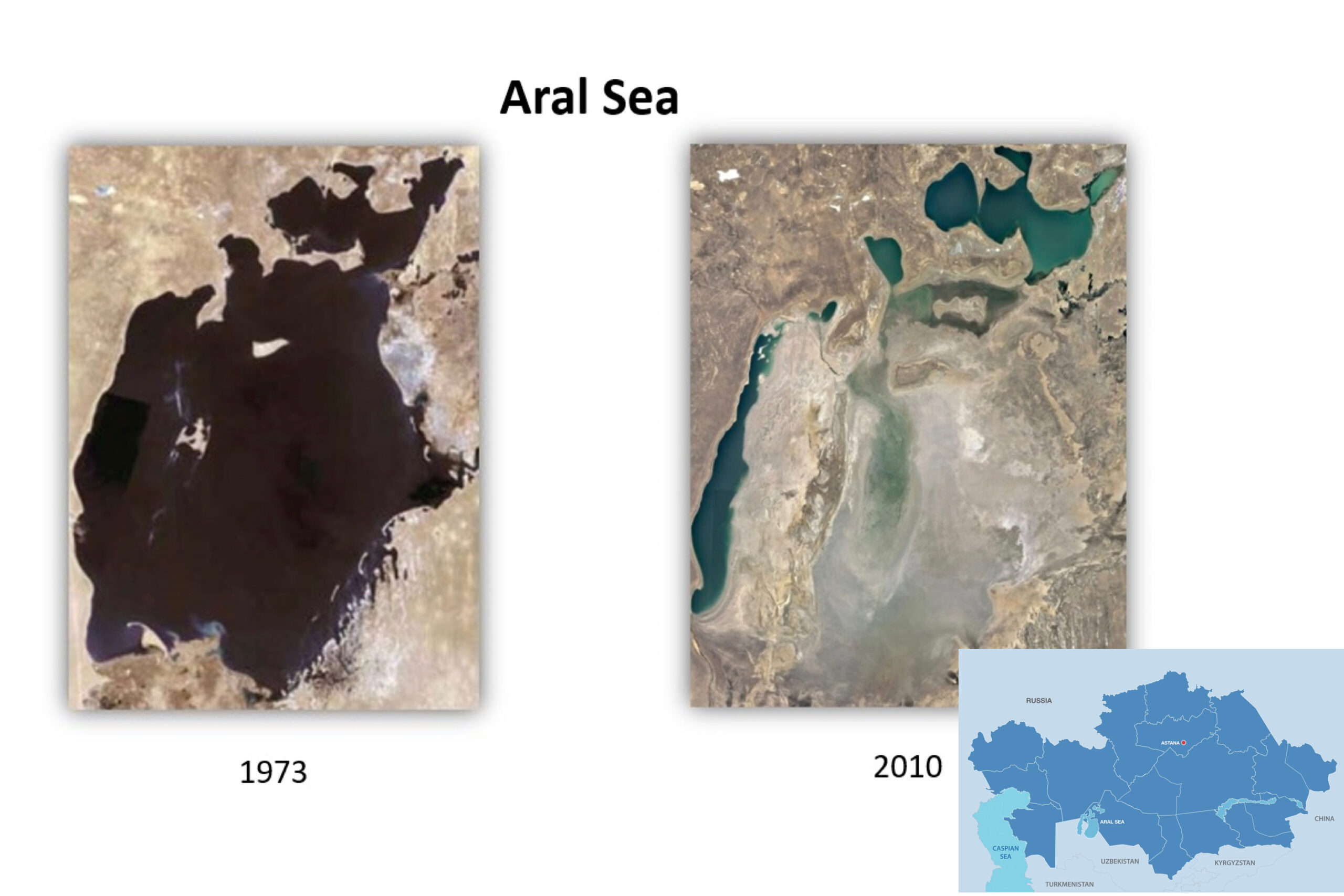ASTANA—The United States Agency for International Development (USAID) will lead an expedition to the USAID Oasis project on the former shores of the Aral Sea in the Kyzylorda region of Kazakhstan from April 12 to 16, the agency’s press service reported.

Once the world’s fourth-largest lake, today, the Aral Sea reduced to a mere 10% of its original water surface area. Photo credit: USAID. Click to see the map in full size. The map is designed by The Astana Times
Established through a collaborative effort between USAID and the Kazakh partners, the Oasis project encompasses a 500-hectare demonstration site. Its primary objective is to conduct tests on black saxaul shrubs, marking a first step in restoring the local ecosystem.
The Oasis is a part of a larger USAID initiative called USAID’s Environmental Restoration of the Aral Sea Activity (ERAS-I). USAID launched this initiative in 2021 with the Executive Directorate of the International Fund for Saving the Aral Sea (ED IFAS).

The Oasis project is a 500-hectare demonstration site testing black saxaul shrubs. Photo credit: Central Asian Journal of Water Research.
The United States Ambassador to Kazakhstan Daniel Rosenblum will join the expedition to commemorate the project’s success and celebrate the people and organizations who have contributed their time and effort to this significant achievement.
“The testing and research at the Oasis will benefit not only Kazakhstan communities in this region, but will also inform ecosystem restoration efforts throughout the Aral Sea region. Working together with national and international partners, we are proud to be part of this mission to find collaborative solutions to build climate resilience in Central Asia,” said Rosenblum.
Once the world’s fourth-largest lake, the Aral Sea began shrinking in the 1960s, when the Syr Darya and Amu Darya rivers that used to nourish it were diverted to irrigate agricultural fields. The Aral Sea ecological catastrophe is one of the worst in human history, with the body of water reduced to a mere 10% of its original water surface area. What remains has become the Aralkum Desert, the planet’s newest desert terrain. This drastic transformation has precipitated recurrent sand and dust storms, exacerbating environmental contamination and posing significant health risks to the local population.
USAID’s Regional Water and Vulnerable Environment activity is focused on strengthening regional capacity to manage shared water resources and mitigating environmental risks in the Syr Darya and Amu Darya river basins.
